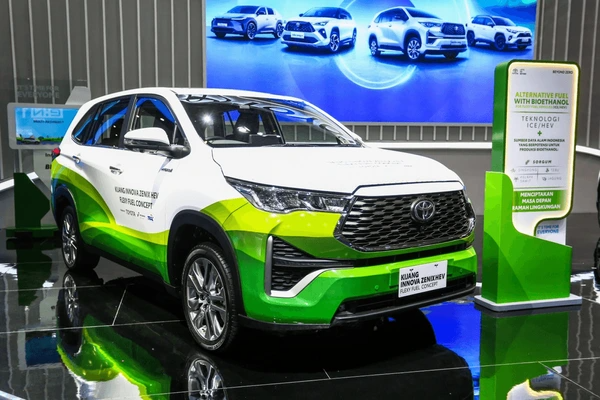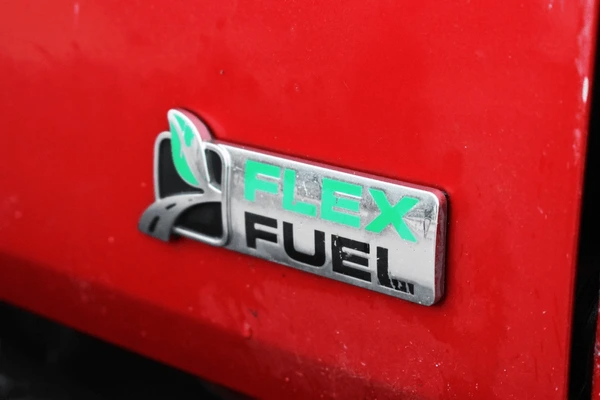
As the demand for cleaner, more versatile fuel options continues to grow, flex fuel has gained attention for its ability to power vehicles using multiple fuel types. Commonly available in countries like the United States and Brazil, flexible fuel offers drivers an alternative to traditional gasoline by incorporating renewable bioethanol into the mix.
This article explains what flexible fuel is, how it works, the types of vehicles that use it, and the advantages and limitations of this fuel system.
What Is Flex Fuel?
What is flex fuel? Eureka Technical Q&A explains that flex fuel is a blend of gasoline and ethanol (usually E85) used in specially designed engines, offering drivers a more renewable and potentially cost-effective fuel option.
Flex fuel, short for flexible fuel, refers to a type of ethanol-gasoline blend that can be used in specially designed engines known as flex-fuel vehicles (FFVs). The most common form of flexible fuel is E85, a blend containing 85% ethanol and 15% gasoline, although actual ratios may vary depending on climate and local regulations.
Flex-fuel vehicles can automatically adjust to any mixture of ethanol and gasoline, from pure gasoline (E0) to E85, without requiring any modifications by the driver.
How Does Flex Fuel Work?
Flex-fuel vehicles use an internal combustion engine equipped with advanced fuel sensors, adjustable fuel injectors, and an engine control unit (ECU) that detects the ethanol-to-gasoline ratio in the fuel tank. Based on the blend, the ECU adjusts ignition timing, air-fuel mixture, and injection rates to maintain optimal performance.
Because ethanol contains less energy than gasoline, the engine needs to inject more fuel when running on higher ethanol concentrations like E85. The flexible ECU ensures that performance and emissions remain balanced regardless of the fuel composition.

Benefits of Flexible fuel
1. Reduced Emissions
Ethanol burns cleaner than gasoline and produces fewer greenhouse gases. Using E85 can reduce carbon monoxide, particulate matter, and other tailpipe emissions.
2. Renewable Resource
Ethanol is produced from crops such as corn, sugarcane, and switchgrass. Its renewable nature supports agricultural economies and reduces dependence on fossil fuels.
3. Compatibility and Flexibility
Flex-fuel vehicles can run on gasoline, ethanol, or any combination of the two, allowing drivers to choose the most available or affordable option at the pump.
4. Performance Boost
Ethanol has a higher octane rating than gasoline, which can improve combustion efficiency and engine performance in some conditions.
5. Lower Fuel Costs
In some markets, E85 is cheaper per gallon than regular gasoline, although mileage may be slightly lower due to ethanol’s lower energy density.

Disadvantages to Consider
- Lower Fuel Economy: Ethanol contains less energy per unit than gasoline, so vehicles running on E85 often get 15–30% fewer miles per gallon.
- Limited Availability: E85 fuel stations are not available in all regions, particularly outside North America and Brazil.
- Cold Start Issues: High ethanol blends can be harder to ignite in cold weather, though modern ECUs largely mitigate this issue.
- Engine Wear Concerns: Ethanol can be more corrosive than gasoline, requiring specially designed fuel systems in FFVs.
Flex Fuel vs. Regular Gasoline
Choosing between flexible fuel and regular gasoline depends on performance, cost, environmental impact, and vehicle compatibility. Here’s how the two fuel types compare in real-world use.
Composition and Performance
Flex fuel (E85) contains 85% ethanol and 15% gasoline. It offers a higher octane rating, which can boost engine performance. However, it provides less energy per gallon. As a result, drivers may experience 15–20% lower fuel economy.
Regular gasoline typically contains 10% ethanol (E10) in the U.S. It has a lower octane rating than E85, which may reduce performance in high-powered engines. But it offers more energy per gallon, supporting longer travel between fill-ups.
Environmental Impact
Flex fuel burns cleaner, producing fewer nitrogen oxides and less particulate matter. It also helps lower greenhouse gas emissions and reduces reliance on fossil fuels. This makes it a greener choice for eco-conscious drivers.
Regular gasoline generates more NOx and particulates during combustion. It also contributes more to carbon emissions and fossil fuel consumption, impacting air quality and climate change over time.
Economic Considerations
Flex fuel usually costs less at the pump than regular gasoline. This lower price helps offset its reduced energy content. However, it requires more frequent refueling and broader infrastructure support.
Regular gasoline remains more expensive in many areas. Yet its widespread availability and existing infrastructure make it more convenient for most drivers, especially in rural or less-developed regions.
Vehicle Compatibility
Flex fuel vehicles (FFVs) support multiple fuel blends, including E85 and regular gasoline. These vehicles include modified engines and fuel systems designed to handle high ethanol levels.
Regular gasoline vehicles run on gasoline or blends with low ethanol content like E10. These cars don’t need special components and can’t use high-ethanol fuels without damage.
| Feature | Flex Fuel (E85) | Regular Gasoline (E10 or E0) |
|---|---|---|
| Ethanol Content | 51–85% | Up to 10% (E10), or none (E0) |
| Fuel Economy | Lower (fewer miles per gallon) | Higher |
| Cost per Gallon | Usually lower | Usually higher |
| Emissions | Lower CO₂ and pollutants | Higher CO₂ emissions |
| Availability | Limited (varies by region) | Widely available |
| Vehicle Requirement | FFV with ethanol sensors | Any gasoline engine |
What Vehicles Use Flex Fuel?
Many manufacturers produce flexible fuel versions of popular vehicles, especially trucks and SUVs. Flex-fuel vehicles usually have a badge labeled “Flex Fuel” or “E85” near the fuel cap.
Common FFVs include:
- Ford F-150 (flex fuel variant)
- Chevrolet Silverado 1500
- Dodge Ram 1500
- Chevrolet Tahoe and Suburban
- Chrysler Town & Country
- GMC Sierra
If you’re unsure whether your vehicle is flexible fuel capable, check your owner’s manual or look for an E85-compatible label near the gas cap.
Can a Regular Gasoline Engine Use Flex Fuel?
No. Standard gasoline engines are not designed to handle high concentrations of ethanol. flexible fuel engines use reinforced fuel lines, corrosion-resistant components, and a specially tuned ECU. Using E85 in a non-FFV can damage the engine and void warranties.
Is It Worth Switching to a Flex-Fuel Vehicle?
The answer depends on your priorities and location. If you live in an area with easy access to E85 and want to reduce your environmental footprint, a flexible fuel vehicle may be a practical choice. However, if fuel economy and refueling convenience are your main concerns, traditional gasoline or hybrid vehicles may be more suitable.
FAQs
Can you mix flex fuel with regular gasoline?
Yes. Flexible fuel vehicles are designed to run on any blend of gasoline and ethanol, so mixing the two is safe and common.
Does using flex fuel harm the engine?
Not in a flexible fuel vehicle. FFVs are engineered to handle the chemical properties of ethanol and gasoline blends without engine damage.
Why is ethanol considered cleaner?
Ethanol produces fewer carbon emissions and burns more completely, reducing smog-forming pollutants.
Can I convert my gasoline car into a flex-fuel vehicle?
Conversions are possible but not recommended unless done professionally. It requires hardware changes and ECU tuning to safely handle ethanol.
Do flex-fuel vehicles cost more?
FFVs typically cost the same or slightly more than regular versions, but the difference is minimal due to manufacturer incentives.
Conclusion
Flex fuel offers a practical blend of performance, fuel flexibility, and environmental benefits. With the ability to run on gasoline, ethanol, or both, flexible fuel vehicles provide an adaptable solution to fuel choice and sustainability challenges. While E85 may not be ideal for every driver due to availability or fuel economy concerns, its role in diversifying the transportation fuel landscape is significant. As renewable energy and biofuels continue to advance, flexible fuel may remain a key component of cleaner, more flexible driving solutions.
To get detailed scientific explanations of Flex Fuel, try Patsnap Eureka.


